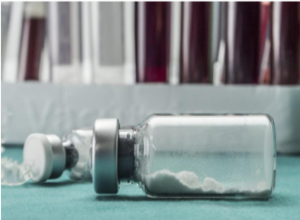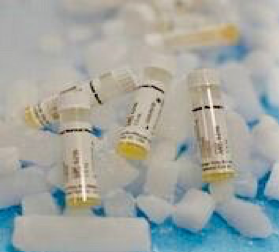Coagulation laboratories have a variety of choices for reagents. What are the differences and why are they important?
Fresh frozen reagents are collected from the donor and frozen immediately. After thawing, they require no preparation, thaw and go.
Lyophilization is the process of freeze drying a reagent to remove the liquid component.
The process leaves a dry powder behind. Before use, the PT  reagent needs to be reconstituted with the exact amount of diluent (liquid)
reagent needs to be reconstituted with the exact amount of diluent (liquid)
as prescribed in the package insert. [1]The biggest concern with lyophilized reagents is the possibility of reconstitution error.
This plays a critical role for quality control in the laboratory. “Quality control material should be simple to use because complicated
reconstitution procedures increase the chance of error.” Liquid controls are more convenient than lyophilized controls
because they do not have to be reconstituted.” Fresh frozen reagents that you thaw and use eliminate the possibility of
reconstitution errors. It is also suggested that “Quality control materials should have the following characteristics. They should have
the same matrix as patient specimens, including viscosity, turbidity, composition, and color.”[2]
Fresh frozen reagents also meet this criteria. Since they are drawn directly from human donors and
not subjected to any process or manipulation, the matrix, viscosity, turbidity, composition, and color remain consistent with your patient sample.

Fresh frozen reagents save your laboratory time and reduce the risk of reconstitution errors.
Fresh frozen also best represents your patient’s plasma, since it is
not subject to further processes or manipulation of any sort.
As a result, you can be confident in the results you are reporting.
[1]Münster, Marion. “Quality Control in Coagulation Testing.” Sysmex Educational Enhancement and Development, July 2012, pp. 1–5., doi:https://www.sysmex-europe.com/fileadmin/media/f100/SEED/Quality_control_in_coagulation_testing.pdf.
[2]Algeciras-Schimnich, Alicia. “Quality Control Is an Important Measure of Laboratory Test Precision | ClinLab Navigator.” ClinLabNavigator, 10 Jan. 2018, www.clinlabnavigator.com/quality-control.html.
Tags: Fresh Frozen, Plasma, pooled normal plasma